Steph W. from SEOPressor


...help you check your website and tell you exactly how to rank higher?


86
score %
SEO Score

Found us from search engine?
We rank high, you can too.
SEOPressor helps you to optimize your on-page SEO for higher & improved search ranking.
By jiathong on June 9, 2020

Over 95% of marketing nowadays takes place on online platforms.
Simply having an online presence is nonetheless not enough to get people on your website and social media pages. You need content that keeps people glued to the pages, sharing links to the pages, and coming back time and again.
Churning the right content is, however, a challenge.
Mistakes in keyword research, getting the ideal posting schedule for your articles, and picking a consistent voice are just some of the challenges most people face in content creation. At times, you also struggle with writer’s block and are unsure of the content that suits your market.
With the right online content, you will have higher visibility on search engines and increased domain authority. Furthermore, you will increase your odds of getting a referral and converting leads. Online marketing platforms with good content also have tight reader relationships and decreased marketing expenses.
Here are some strategies for streamlining your content creation to harness these and other benefits in online marketing.
The buyer persona is an imaginary representation of the ideal client for your product.
The development of a persona helps you tailor your content to attract and relate with a client just like you would with a human.
Audience analysis and buyer persona is often ignored in lieu of chasing after valuable keywords.
However, this is crucial in all your investment strategies towards client acquisition and retention, including product development, content creation, and sales follow-up.
The following are some approaches in the creation of the ideal buyer personas to guide your content creation:
1. Evaluate your databases to get the trends of how clients are consuming your content.
If your website has Google Analytics set up, which you should, by the way. You can get some insights about your website visitors’ demographic in your Google Analytics account.
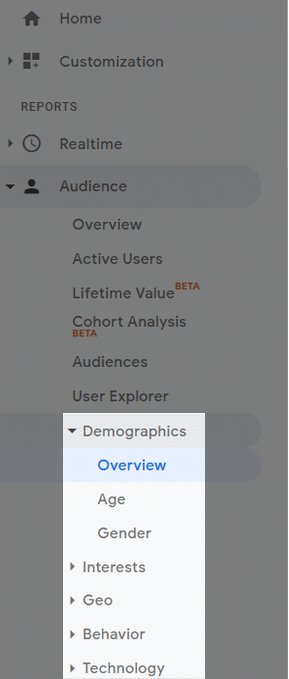
It’s not perfect, but it’s a simple way for you to get started on building your buyer persona.
One important data that can really help your design and UX decisions is knowing how your visitors are consuming your content.
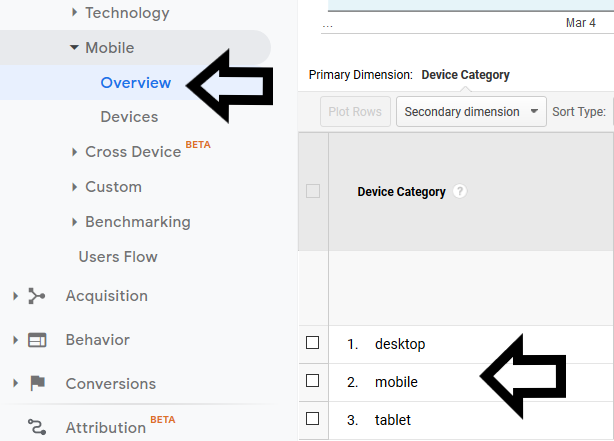
Right inside Google Analytics, you can know whether your website visitors are on their mobile or laptop.
And that is important because that changes how they interact with your website, and how effective your marketing efforts will be.
Think about this, do you use pop-ups? That might be the reason why your visitors – with 50% of them on mobile, bounced. You don’t want an intrusive pop-up with a nonexistent exit button on your palm size screen, right?
Look into these data, they’re important aspects to help you build your buyer persona.
You don’t ask them to fill up a form when it’s their first time looking at your website and only have the minimum idea on what the hell you’re trying to sell.
This should be done lower down the funnel, like when they’re trying to sign up for your webinar (if you’re hosting any), or when they want to download a report that you have compiled.
With these mid-funnel contents, you know that whoever wants them, more or less fits the buyer persona you have in mind. It also doesn’t hurt to double-check to make sure.
Look at this example.
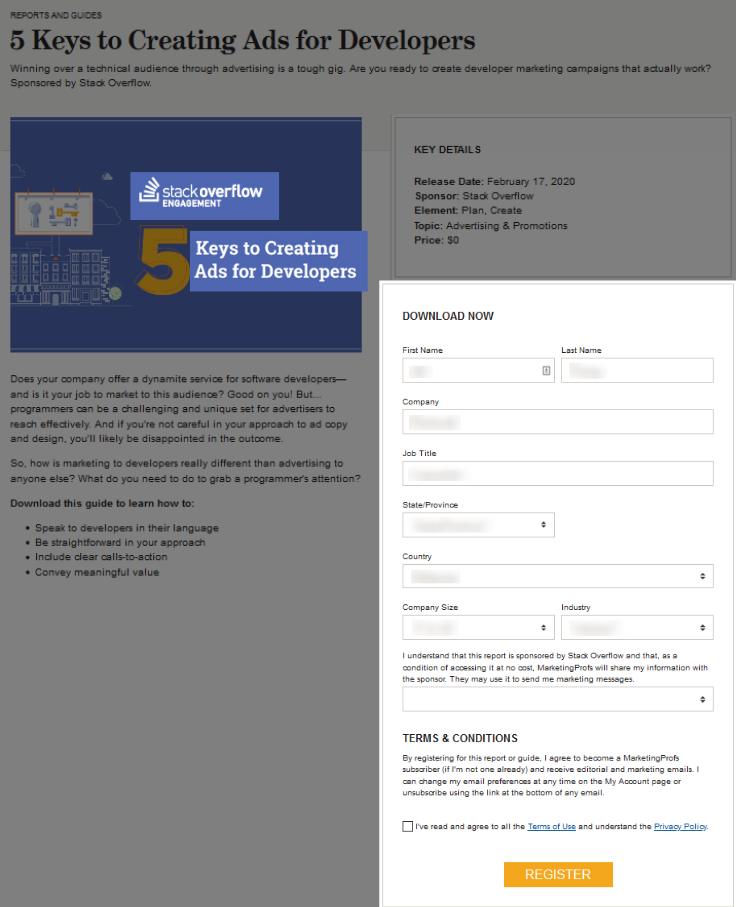
The first thing you can tell is that this guide is very targeted.
The guide is sponsored by StackOverflow, an online community for developers, which they made sure to highlight again on the guide title – for Developers.
This shows that the company has a pretty good idea of who their targeted audience is, but how can they make sure?
By asking for more information in the download form.
Their service might only be available in certain countries, so they wanna know where you’re from. They might also provide different tier of services based on volume, hence the option to fill out your company size.
Collecting these kinds of data help you to create a more sculpted buyer persona. Which you can then use to create some killer content with high conversion rate, because it’s so relevant to them.
The easier way would be sending out survey forms like these from Neil Patel and Grammarly.
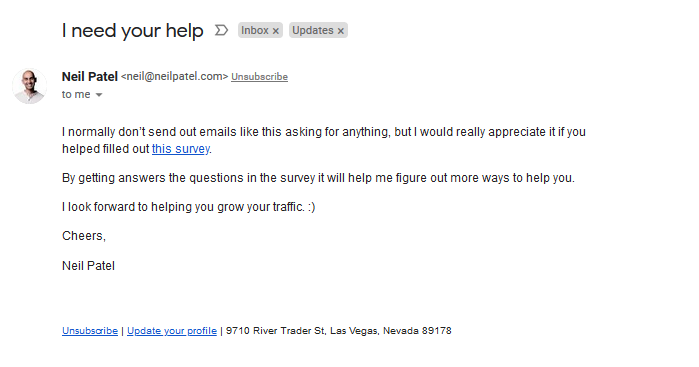
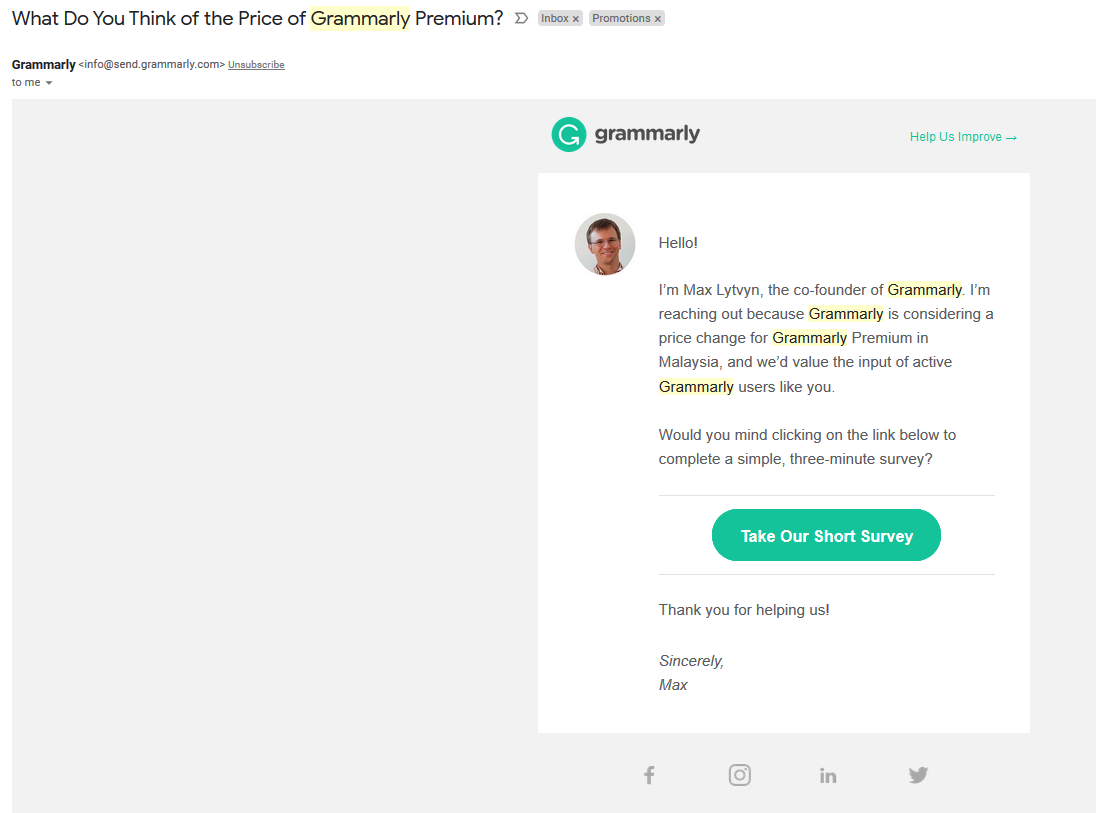
But the tricky thing with surveys is this.
You’re asking someone to spend their time for free, for you. So the least you can do is to make it quick and easy or offer some sort of compensation for their time.
At the same time, you want to make sure that the questions you have listed in the forms are critical for your cause.
For example, is knowing their age as important as knowing what their job is for you to pitch them your product later on? If the answer is no, don’t waste your time including that question, and don’t waste theirs answering it.
Most businesses do not take time to define a clear objective for their content.
With this mistake, you often end up with non-targeted content that will not resonate with your ideal buyer persona. To ensure you have purposeful content, start your creation by asking yourself the following questions;
The following are some suggestions for creating content around different objectives;
At the top of the marketing funnel, buyers are looking for alternatives, and your content centers on awareness.
At the mid-funnel, center on the pros and cons of your brand to capture clients at the assessment stage.
At the bottom of the funnel, clients are sure they want your product and content should thus reinforce their beliefs.
Here are content ideas for different marketing stages;
81% of clients, according to Adweek, will look online before opting for the best brand for their needs. Capture their attention using original reports and other forms of educational articles. These ease their decision making.
People at this point are considering their options. Here, people will start eliminating the alternatives that do not suit their needs and budget. At this stage, webinars, expert guides, whitepapers, and live interactions, highlighting the benefits of your brand, will suffice.
At this stage, clients know your brand is their ideal solution. Even so, it would help if you still reinforced their belief. The best content for this stage includes product literature, demos, case studies, and trial offers.
You will lose in online marketing if your pages do not rank for keywords that are relevant to your brand and clients. A keyword gap analysis helps you pick the gaps in your competitor’s content. This way, you determine the undiscovered opportunities for optimally-performing content.
Here are the approaches for performing a keyword gap analysis;
A particular keyword gap analysis tool that I find interesting and very user-friendly is RankingGap, a newly launched tool that has 4 different keyword views for you to refer to.
Using this tool, you can easily discover ranking keywords that you and/or your competitors have. That saves you a lot of time from the guesswork.
One tool that can change your content creation is the content template.
This is a simple document that will serve two primary purposes. It helps get information from experts on what you should do to improve your content and improves your content’s structural consistency.
Here are the steps for the creation of a content template:
You can also glean considerable information about your target market from their reception of your past articles.
Check your website and social media marketing platforms to know the articles that had higher engagement rates and those that flopped. You can then learn from your failures and triumphs on what your target market wants.
Nowadays, there are several evaluation tools for the performance of online content. These tools evaluate the number of shares, likes, and conversion rates, among other metrics.
Churn content along the lines of the best-performing articles rather than copy-pasting them since this will make you look unimaginative and lazy.
Content creation challenges are as common in small businesses as they are in large ones. The challenges do not, however, make the creation of optimal online content impossible.
With the approaches above as part of your digital content creation strategy, the process will be significantly easy.
These tips will hopefully stimulate you to churn some of the best-performing articles for your online market. With these articles, you can sit back and watch the profits stream in with the optimal rates of engagement on the lucrative online market.
Updated: 13 December 2025


Save thousands of dollars (it’s 100x cheaper)

Zero risk of Google penalty (it’s Google-approved)

Boost your rankings (proven by case studies)
Rank High With This Link Strategy
Precise, Simplified, Fast Internal Linking.
